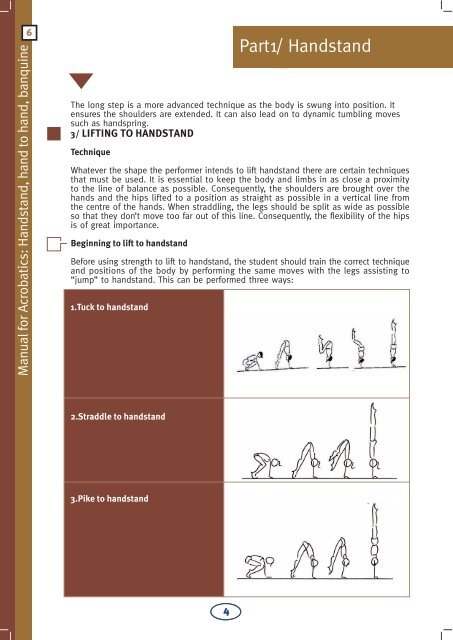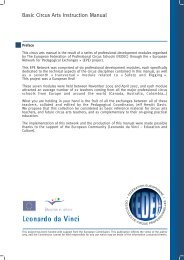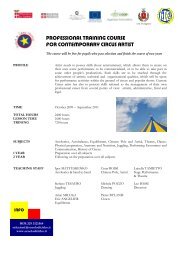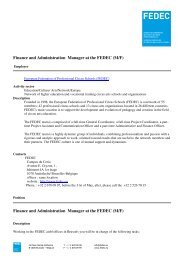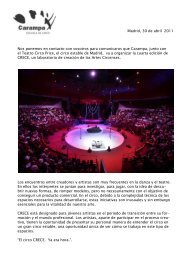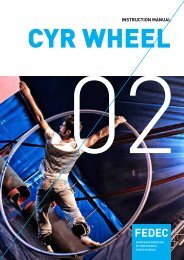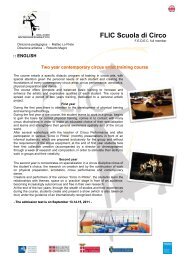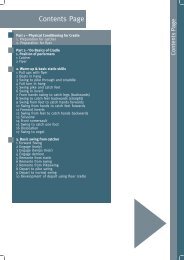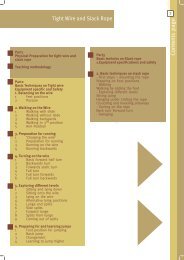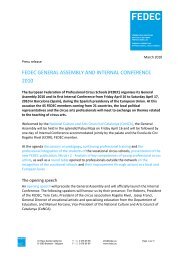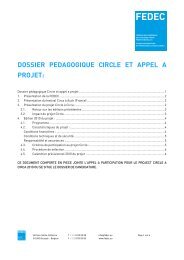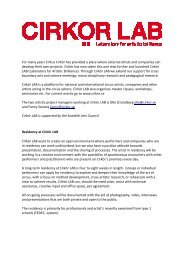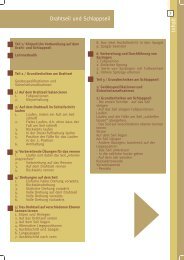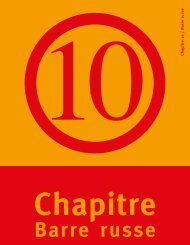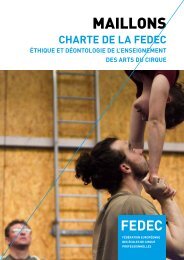CHAPITRE1 (TRAINING THEORY)b - Fedec
CHAPITRE1 (TRAINING THEORY)b - Fedec
CHAPITRE1 (TRAINING THEORY)b - Fedec
Create successful ePaper yourself
Turn your PDF publications into a flip-book with our unique Google optimized e-Paper software.
6<br />
Manual for Acrobatics: Handstand, hand to hand, banquine<br />
4<br />
Part1/ Handstand<br />
The long step is a more advanced technique as the body is swung into position. It<br />
ensures the shoulders are extended. It can also lead on to dynamic tumbling moves<br />
such as handspring.<br />
3/ LIFTING TO HANDSTAND<br />
Technique<br />
Whatever the shape the performer intends to lift handstand there are certain techniques<br />
that must be used. It is essential to keep the body and limbs in as close a proximity<br />
to the line of balance as possible. Consequently, the shoulders are brought over the<br />
hands and the hips lifted to a position as straight as possible in a vertical line from<br />
the centre of the hands. When straddling, the legs should be split as wide as possible<br />
so that they don’t move too far out of this line. Consequently, the flexibility of the hips<br />
is of great importance.<br />
Beginning to lift to handstand<br />
Before using strength to lift to handstand, the student should train the correct technique<br />
and positions of the body by performing the same moves with the legs assisting to<br />
“jump” to handstand. This can be performed three ways:<br />
1.Tuck to handstand<br />
2.Straddle to handstand<br />
3.Pike to handstand


